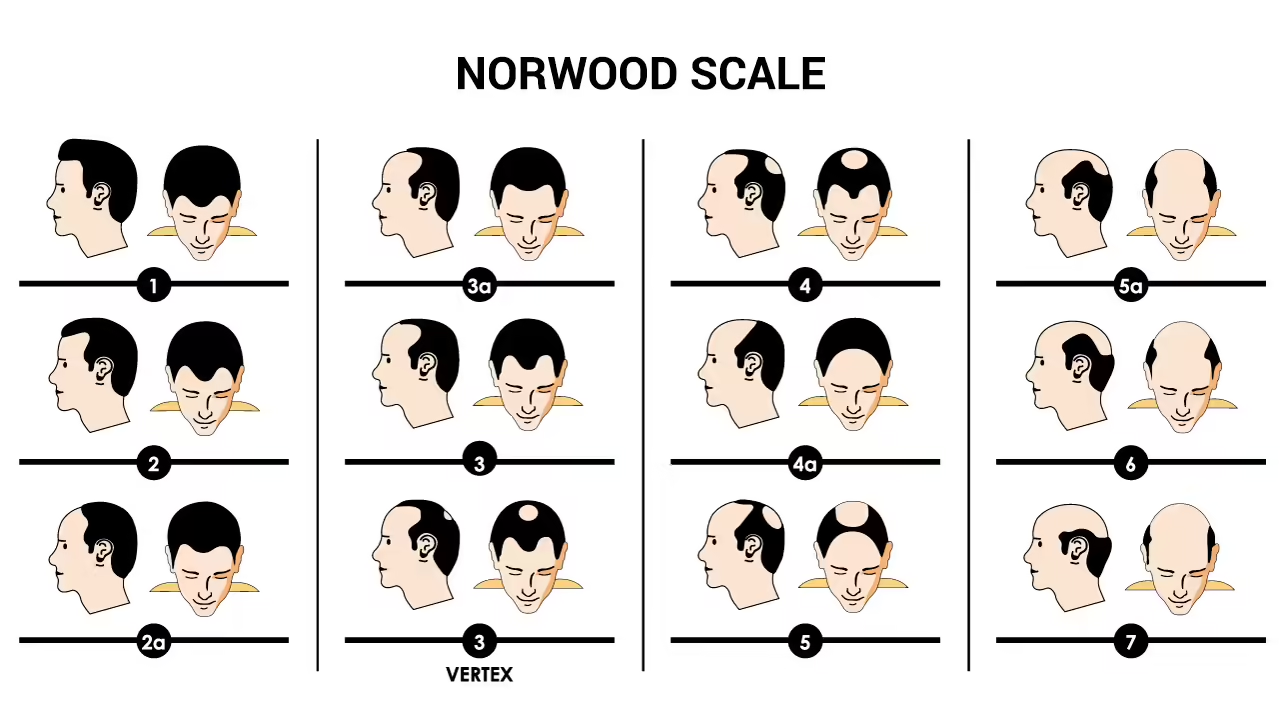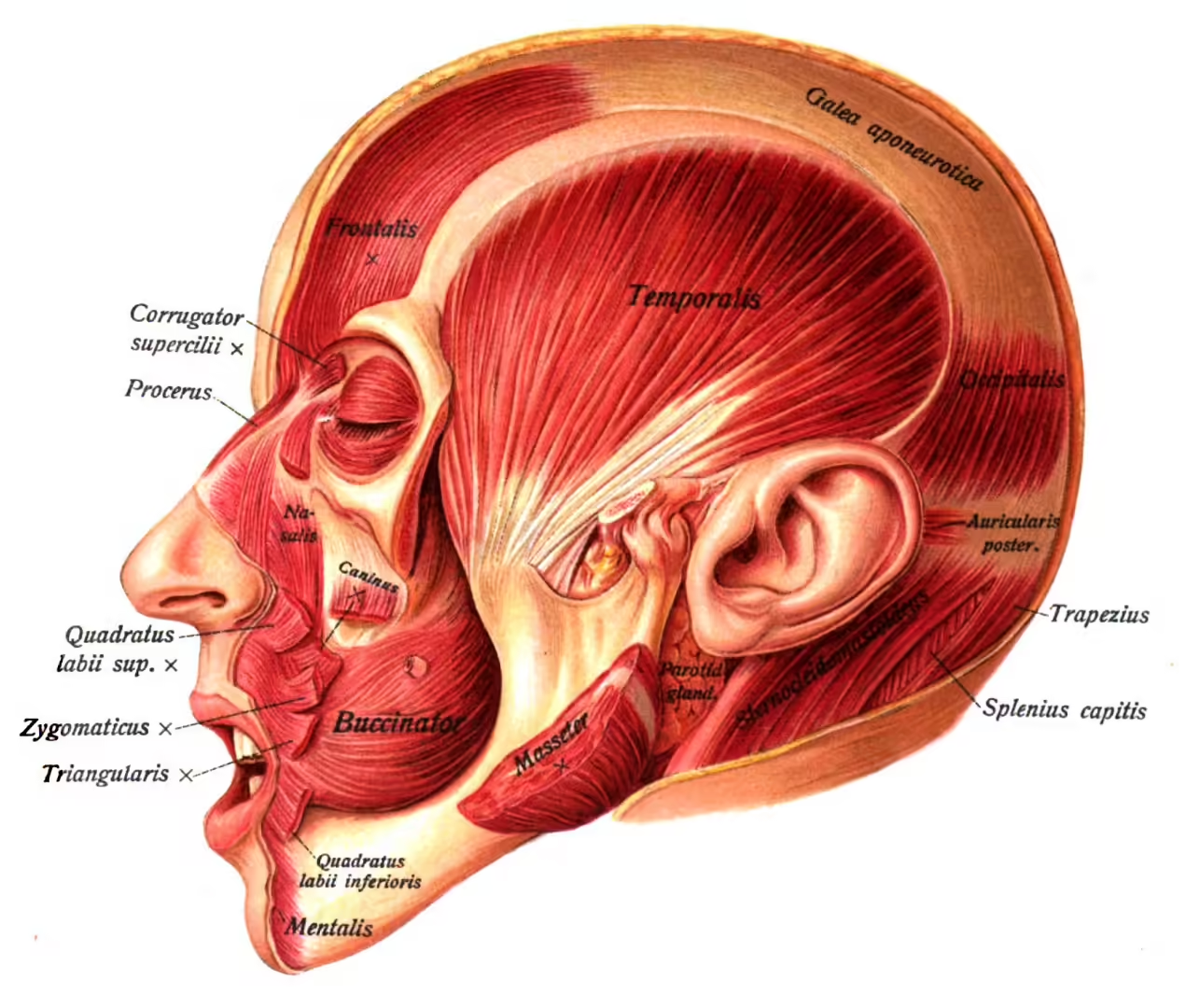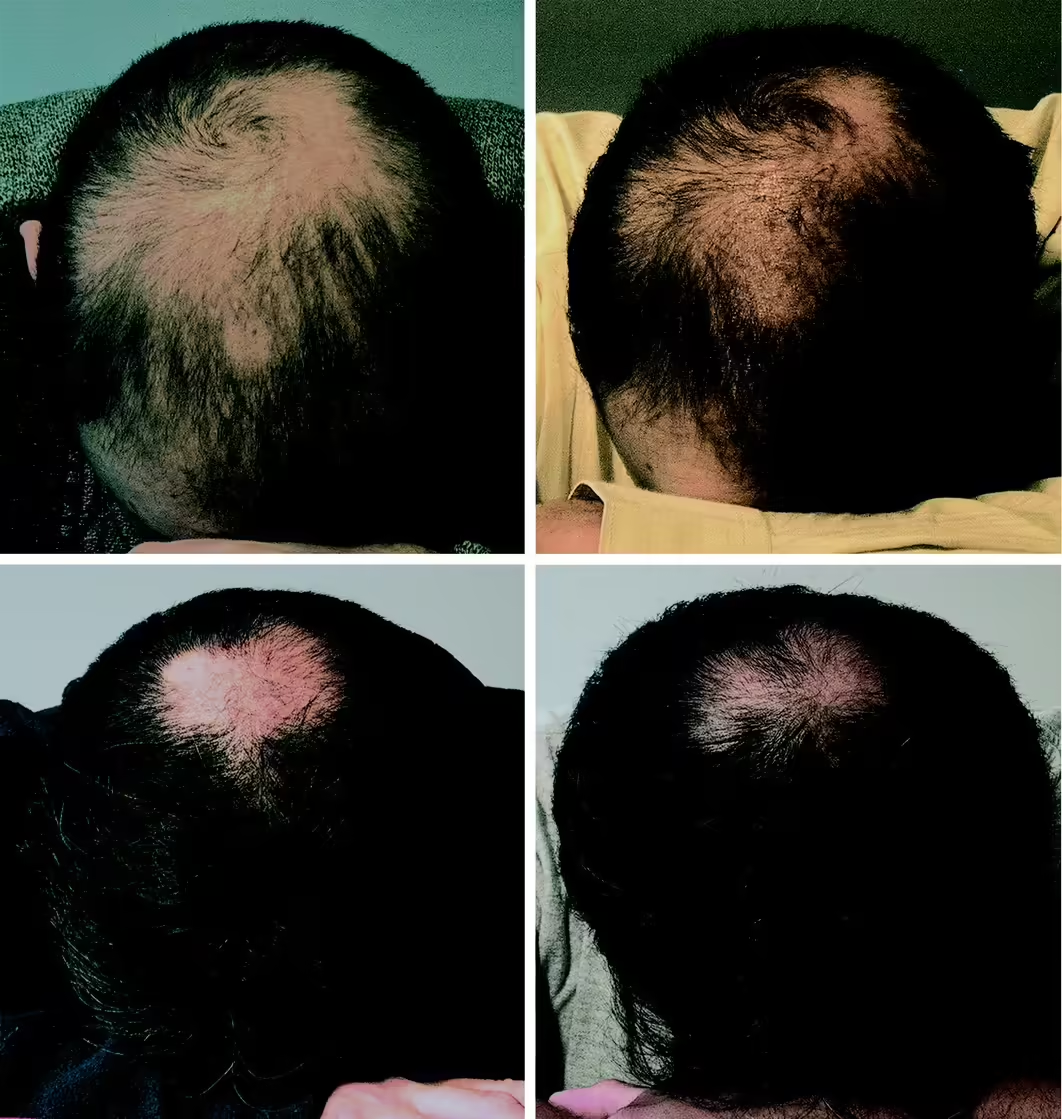Quickstart
A quickstart guide to start reversing male androgenetic alopecia
Definition
Male androgenetic alopecia (MAGA) – also known as male-pattern baldness – is a common form of hair loss in men. As the name suggests, the male androgenetic alopecia is believed to be mostly caused by a combination of androgens (male hormones) and genetics.
Hair is progressively lost in a well-defined area that matches with the epicranial aponeurosis (or galea aponeurotica), while the hair at the sides and back of the head remains unaffected.

Causes
Some things are obvious about male androgenetic alopecia. It affects men after puberty when androgens reached their peak and only the hair on top of the head, the hair at the sides and back of the head remains unaffected.
With aging, serum (present in the blood) androgen levels drop, however hair loss keeps progressing. This might seem strange at first, but then we remember that serum and tissue levels aren’t the same thing. We can have low androgen levels circulating in the blood and at the same time have elevated androgen levels in the scalp. What matters in male androgenetic alopecia are the conditions of the region where hair loss occurs, which corresponds to the galea aponeurotica.
The galea aponeurotica is very prone to mechanical stress since it’s a thin and relatively inelastic tendon-like tissue sheet that communicates the frontal and occipital bellies of occipitofrontalis muscle. If these muscles aren’t relaxed, they pull the galea aponeurotica down and compress the blood vessels beneath it.

A study where botulinum toxin type A (Botox) was injected to relax the muscles surrounding the scalp achieved good results in regrowing hair.
Important remarks of this study
Mechanistically, the scalp behaves like a drum skin with tensioning muscles around the periphery. These muscle groups — the frontalis, occipitalis, and periauricular muscles and to a minor degree the temporalis — can create a “tight” scalp when chronically active. Because the blood supply to the scalp enters through the periphery, a reduction in blood flow would be most apparent at the distal ends of the vessels, specifically, the vertex and frontal peaks. Areas of the scalp with sparse hair growth have been shown to be relatively hypoxic, have slow capillary refill, and to have high levels of dihydrotestosterone.
Conceptually, Botox “loosens” the scalp, reducing pressure on the perforating vasculature, thereby increasing blood flow and oxygen concentration. The enzymatic conversion of testosterone to dihydrotestosterone is oxygen dependent. In low-oxygen environments, the conversion of testosterone to dihydrotestosterone is favored; whereas in high-oxygen environments, more testosterone is converted to estradiol. Blood flow may therefore be a primary determinant in follicular health. Strategically placed Botox injections appear able to indirectly modify this variable, resulting in reduced hair loss and new hair growth in some men with androgenetic alopecia.

By now you should have an idea about what starts the chain of events on the galea aponeurotica region that ultimately results in hair loss for men with androgenetic alopecia.
- Poor blood circulation
- Low-oxygen levels
- Increase of androgens
- Increase of sebum production
- Proliferation of fungi
- Inflammation
- Fibrosis and calcification
- Miniaturization of hair follicles (hair loss)
Summing up, low-oxygen levels due to poor blood circulation in the galea aponeurotica region result in high levels of testosterone being converted to the more powerful male hormone dihydrotestosterone (DHT).
High levels of DHT increase sebum production – since it’s stimulated by androgens – and fungi that cause inflammation metabolize triglycerides present in sebum.
When you have an inflamed and itchy scalp, it means that your body is fighting pathogens, growing strong hair is not a priority. However, sometimes the inflammation only happens at the follicle level (microinflammation) and isn’t visible on the scalp.
Our body will try to reduce chronic inflammation by blocking access of fungi to those constantly inflamed areas by resorting to fibrosis and calcification.
Treatments
Ok, now that we understand what male androgenetic alopecia is and what causes it, we can treat it.
- Dutasteride: reduces DHT (5-α-reductase inhibitor) more than finasteride
- Finasteride: reduces DHT (5-α-reductase inhibitor)
- Minoxidil: increases blood flow by vasodilation
- Microneedling: increases blood flow by creating new blood vessels (angiogenesis)
- Ketoconazole: kills fungi, reduces inflammation, sebum and testosterone
- Tretinoin: reduces sebum and enhances minoxidil response by upregulating follicular sulfotransferase enzymes
- Rosemary oil: contains carnosic acid, which is an androgen receptor degrader
- Peppermint oil: often used as an antiandrogenic treatment for mild hirsutism (excessive body hair in women)
- Azelaic acid: kills fungi, reduces inflammation, sebum and DHT (5-α-reductase inhibitor)
- Salicylic acid: reduces sebum and inflammation
- Piroctone olamine: reduces sebum and kills fungi
- Castor oil: reduces inflammation, kill fungi and increase PGE2
- Cetirizine: reduces inflammation, decrease PGD2 and increase PGE2
- Diclofenac: reduces inflammation
- Sildenafil (Viagra): increases blood flow by vasodilation
- Hydrocortisone: reduces inflammation
- Sunlight exposure or low-level light therapy (LLLT): improves blood circulation and kills fungi
- Scalp massages: improves blood circulation
- Intermittent fasting: reduces inflammation
- Ketogenic diet: reduces inflammation
- Taurine: prevents and reduces fibrosis
- Vitamin D3 + K2: prevents and reduces calcification
Supplements
Not as important as the previous list, but when combined it can have a synergistic effect and boost your gains.
- Zinc
- MSM
- Biotin
- Vitamin C
- Vitamin D3 + K2 (these two should always be combined)
aicepolA regimen
This is a very effective regimen for reversing alopecia. Dosages are kept low to reduce costs and the possibility of side effects. Nonetheless, you should consult a dermatologist before starting it.
Everyday
- Topical finasteride/minoxidil: put three finasteride pills (15 mg) in your 60 mL minoxidil bottle, it’ll dissolve in few hours, use 1 mL topically
- Castor oil: take half teaspoon (roughly 2 mL) orally
- Supplement: with a meal take a supplement for hair/nails that contains zinc, biotin, vitamin C and MSM (Methylsulfonylmethane)
Every two weeks
- Microneedling: use an adjustable derma-stamp at 1 mm of depth and suspend the use of exfoliators (tretinoin, azelaic and salicylic acid) for 3 days to allow your skin to recover
Extra
- Essential oils: add rosemary and peppermint oils to your homemade lotion at around 5-10 % concentration
- Tretinoin: use a pea-sized amount of this cream topically in the evening (2-3 times a week)
- Tedol: this is a ketoconazole (2 %) liquid lotion, use 1 mL topically everyday
I think this is a very complete but also cheap regimen. At least where I live (Portugal, Europe) I can buy everything on the list at local pharmacies for very low cost.
Cost
These are the round-up prices in Portugal.
- Finasteride 5 mg – 60 tablets: 12 euros
- Minoxidil 5 % – 60 mL: 10 euros
- Tedol 100 mL (2 % ketoconazol lotion): 11 euros
- Ketrel 30 g (0,05 % tretinoin cream): 4 euros
- Castor oil 250 mL: 4 euros
Buy online
- Minoxidil
- Essential oils
- Supplement for hair/nails
- Adjustable derma-stamp
- Pill-cutter
- USB digital microscope
Tips
- Tretinoin: use it only at night, avoid sun exposure after application
- Castor oil: half teaspoon (roughly 2 mL) orally is enough to get results, higher dosages can have a laxative effect
- Haircut: get a short haircut or shave your head while doing the treatment, it’ll help with microneedling and the absorption of topicals
- Scalp massage: before or while washing your head, massage it for at least 5 minutes, to relax the muscles, but also to squeeze sebum out of the pores
- Topicals: wash your head with hot water and an anti-dandruff shampoo (with piroctone olamine listed as an active ingredient) before applying a topical, it’ll improve topical absorption by opening the pores and remove sebum
- Diet: ketogenic (low-carb) diet combined with intermittent fasting is not only great to reduce inflammation and slow down aging, but also good to prevent tooth decay, diabetes and even cancer
Avoid
- Smoking: carbon monoxide can dramatically reduce hemoglobin’s ability to transport oxygen
- Cold: has a vasoconstrictor effect
- Carbs: sugar and simple carbs are highly inflammatory, growing hair is secondary when your body is fighting inflammation
- Oils: avoid oils that are greasy, topically they can clog your pores and prevent an efficient absorption of other topicals
- Sedentarism: a good walk on a sunny day is relaxing, increases blood circulation and helps your body to produce vitamin D
If you notice that your scalp is becoming less oily, it probably means that androgen levels in the scalp are dropping and your regimen is working.
However, reversing alopecia is a slow process, you shouldn’t expect any visible results before 6 months of treatment. Take photos every month to evaluate your gains. You can use an USB microscope to detect hair growth sooner.
Anyway, this short guide compiles what I wish I knew when my hair loss started. If you want more information you can do your own research with the help of Google Scholar and Sci-Hub. Sci-Hub is the best companion of Google Scholar, it gives access to articles trapped behind paywalls. Find the articles you want to read with Google Scholar, then open them with Sci-Hub.





